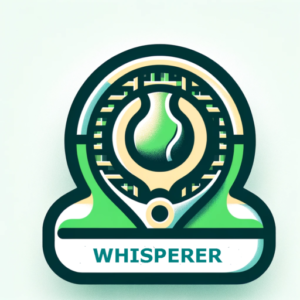The piriformis is a small, pear-shaped muscle located deep in the buttock region, behind the gluteus maximus. It originates from the sacrum (the base of the spine) and extends to the upper surface of the femur (thigh bone). The piriformis muscle plays several important roles:
- Hip Rotation: It assists in the lateral (external) rotation of the hip, which is important for movements such as turning the leg and foot outward.
- Stabilization: It helps stabilize the hip joint, especially during walking, running, and other dynamic activities.
- Balance and Coordination: By contributing to the movement and stability of the hip, the piriformis muscle aids in maintaining balance and coordination during various activities.
- Sciatic Nerve Relation: The piriformis muscle is located close to the sciatic nerve, the largest nerve in the body. In some individuals, the sciatic nerve runs through or beneath the piriformis muscle. If the piriformis muscle becomes tight or inflamed, it can compress the sciatic nerve, leading to a condition known as piriformis syndrome. This can cause pain, tingling, and numbness along the path of the sciatic nerve, often radiating from the lower back to the buttocks and down the leg.
Understanding the function and location of the piriformis muscle is crucial for diagnosing and treating related issues, especially for athletes and individuals who engage in activities that heavily involve hip movement and stability.
To rehab a piriformis muscle injury, follow these steps to ensure a safe and effective recovery:
Stretching and Mobility Exercises
Once the acute pain subsides, gentle stretching and mobility exercises can help reduce tension in the piriformis muscle and improve flexibility.
- Piriformis Stretch:
- Lie on your back with both knees bent.
- Place the ankle of the affected leg on the opposite knee.
- Gently pull the bottom knee towards your chest until you feel a stretch in the buttock.
- Hold for 30 seconds, repeat 3 times.
- Knee to Opposite Shoulder Stretch:
- Lie on your back with your legs straight.
- Pull the affected leg’s knee towards the opposite shoulder.
- Hold for 30 seconds, repeat 3 times.
- Hip Rotations:
- Lie on your back with knees bent and feet flat on the floor.
- Slowly rotate your knees to one side, keeping your shoulders on the floor.
- Hold for 10 seconds, repeat 5 times on each side.
Strengthening Exercises
Strengthening the muscles around the hip can provide support and reduce the likelihood of future injuries.
- Clamshells:
- Lie on your side with knees bent and feet together.
- Keeping feet together, lift the top knee as high as possible without moving the pelvis.
- Lower back down slowly.
- Perform 3 sets of 10-15 reps on each side.
- Bridges:
- Lie on your back with knees bent and feet flat on the floor.
- Lift your hips off the ground until your shoulders, hips, and knees form a straight line.
- Hold for a few seconds and then lower back down.
- Perform 3 sets of 10-15 reps.
- Side-Lying Leg Raises:
- Lie on your side with legs straight.
- Lift the top leg up towards the ceiling, keeping it straight.
- Lower back down slowly.
- Perform 3 sets of 10-15 reps on each side.
Postural and Ergonomic Adjustments
- Avoid Prolonged Sitting: Take regular breaks to stand and move around.
- Correct Sitting Posture: Use a cushion or a lumbar roll to support the lower back.
- Proper Footwear: Wear supportive shoes to reduce strain on the hips.
Manual Therapy and Professional Guidance
- Massage Therapy: Regular massages can help reduce muscle tension.
- Physical Therapy: A physical therapist can provide a tailored exercise program and manual techniques.
- Chiropractic Care: Chiropractors can help with alignment issues that may contribute to piriformis syndrome.
Prevention
- Warm-Up and Cool Down: Always warm up before exercising and cool down afterward.
- Balanced Exercise Routine: Incorporate a mix of stretching, strengthening, and aerobic exercises.
- Listen to Your Body: Avoid overtraining and take rest days as needed.
If symptoms persist, consult with a healthcare professional to rule out other conditions and to receive personalized treatment.


